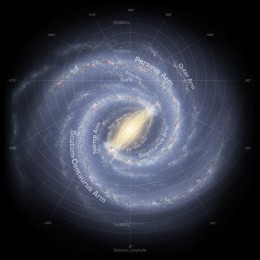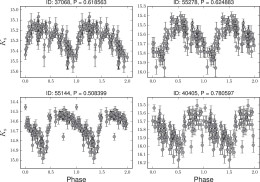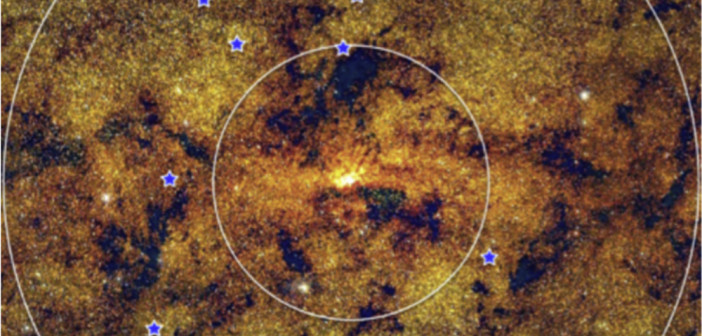The recent discovery of old and variable RR Lyrae stars in the very center of our galaxy may answer the long-standing question of how the Milky Way’s nucleus formed.
Models for a Dense Nucleus

Face-on illustration of the Milky Way’s structure. The galactic nucleus makes up a very small component of the galaxy; it extends roughly 400 light-years from the Milky Way’s center. Compare this to the 100,000 light-year total diameter of the galaxy! [NASA/Robert Hurt]
How galactic nuclei like the Milky Way’s formed remains an open question today. Two possible scenarios have been proposed:
- Fast gas accretion onto the central region caused rapid star formation, leading to the high stellar densities in the nucleus.
- Globular clusters sank to the center of the galaxy via dynamical friction, where they merged and formed the high-density nuclear bulge with the nuclear star cluster at its center.
How can we test the second model? A huge point of support would be the discovery of stars in the nuclear bulge that are characteristically found in old Milky Way globular clusters. No surveys, however, have been able to probe deep enough to find such old, faint stars amidst the bright stars that have formed more recently — until now.
Tell-Tale Stars
Led by Dante Minniti (Millennium Institute of Astrophysics and Andres Bello National University, Chile; Vatican Observatory), a team of scientists has now presented data from the VISTA Variables in the Via Lactea (VVV) ESO public survey. VVV’s deep photometry in the near-infrared allowed Minniti and collaborators to discover a dozen faint RR Lyrae stars within ~275 light-years of the galactic center.

Characteristic saw-tooth light curves for several of the old RR Lyrae stars discovered in the galactic nuclear bulge. [Minniti et al. 2016]
The discovery of these stars provides the first direct observational evidence that the galactic nuclear stellar bulge contains ancient stars, indicating that the galactic nucleus formed long ago (at least 10 billion years ago, if not more). The distribution of the RR Lyrae stars throughout the central region of our galactic nucleus supports the scenario in which these stars are the remains of primordial globular clusters that merged to form the nuclear bulge of the Milky Way.
If this scenario is correct, it would mean that the nuclear bulge is the most massive and oldest surviving star cluster of our galaxy! We hope to soon learn more about this population of old stars in the Milky Way’s nucleus, as an extended VVV survey is planned for the next three years.
Citation
Dante Minniti et al 2016 ApJ 830 L14. doi:10.3847/2041-8205/830/1/L14

1 Comment
Pingback: the core of the Milky Way was formed by